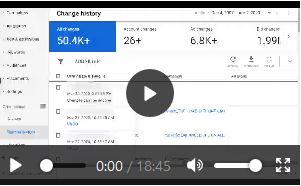
Earlier this year, AdWords introduced expanded text ads. With more space for ad text and some changes to ad format, the introduction of expanded text ads represents a significant change to the way advertisers will write ad copy. Google has announced that by January 2017, advertisers will be obligated to use the new format.
While many advertisers are already seeing promising results, you may find that making the transition to the new format will require a period of testing and experimentation. Today, we’ll go over what’s changing with AdWords expanded text ads, and explore some of the ways that advertisers can prepare for the shift and start getting the most value out of the new ad format.
Table of Contents
Expanded Text Ads: What’s Changing
AdWords is introducing several key changes to ad formats with expanded text ads. The goal of the reformat was to make ads more mobile-optimized. Since over half of ad traffic now comes from mobile devices, it makes sense that AdWords is focusing on delivering a higher quality experience for their users across all devices.
- Expanded text ads mobile-focused. These new ads are larger than previous ad formats, and are designed to automatically display correctly on screens of all sizes.
- They have two headline lines instead of one, with a total of 30 characters between the two lines. This gives advertisers a slightly higher character count to work with when writing ad copy.
- The description lines of the ads now consist of one large field. Again, advertisers get a slight bump in total character count, with the new description section allowing up to 80 characters, instead of 35 per line (70 total).
- Display URLs now default to final domain URLs. Advertisers now have the option to add up to two additional (and optional) “Path” fields. These fields are intended to provide users with more information about where they’ll be taken when they click on an ad link. Advertisers will no longer manually add a display URL when writing ads.
How Expanded Text Ads Will Impact Your Campaigns
Overall, the net takeaway from the introduction expanded text ads is that advertisers now have more space to write ads. The additions to both headline and description character limits give advertisers more room to write clearer, more impactful ads. By providing viewers with more information in their ads, advertisers may be able to garner more clicks and higher conversion rates for their campaigns.
The focus of the move towards expanded text ads is to optimize mobile viewers’ ad experience. The expanded text format Advertisers may see a boost in conversions on mobile devices after the changeover, as their ads should function more effectively for mobile viewers. As we’ve seen with mobile ad extensions, adding more information to your mobile ads can help increase viewer engagement with your ads significantly.
However, many advertisers have crafted their ads to work specifically within the parameters of the existing ad formats, down to the very last character. While you may ultimately benefit from the change, your campaigns may suffer initially if they aren’t optimized for the format changes. To make the transition successfully and smoothly, you’ll have to take some steps to prepare your campaigns for expanded text ads.
What You Can Do to Prepare Your Campaigns
Test (and Retest) Your Ad Copy
You’ve likely already done a good amount of testing to find the perfect words for your existing PPC ads. Now it’s time to start experimenting again! A/B testing revised ads that take full advantage of the new format will give you a good sense of how you’ll need to update different campaigns. AdWords itself has strongly recommended that advertisers start testing out the new format ahead of the switch; we also recommend starting your testing as soon as possible, so you can get ahead of the mandatory change.
Start Running Expanded Text Ads Alongside Current Ads
Another of the recommendations straight from the AdWords blog is to start rolling out expanded text ads as soon as possible — but to do so incrementally. If you switch all of your ads to the new format right now, you’re sure to find the updating process overwhelming, and your campaign performance will suffer. To ensure a smoother transition, start moving campaigns to the new format slowly. As you try out expanded text ads, keep some of your other campaigns running in the older format as long as possible. You can also use your existing ads to build stronger expanded ads. For instance, you may want to combine two of your top performing headlines into a single, longer one to get the impact of both.
Focus on Your Quality Score
Because the new format takes up a large amount of space on smartphones and other small screens, getting in the top positions on mobile ads can significantly impact the success of your ads. Start making an effort now to increase your Quality Score to ensure that your newly redesigned ads get the visibility that you need for AdWords success.

Need Google Ads Management Help?
Free Google Ads account review for
qualified clients
Almost 20 years experience
Getting the Most Out of Expanded Text Ads
When leveraged strategically, expanded text ads have the potential to make a hugely positive impact on your AdWords campaigns. And if you’re not already tapped into the lucrative mobile PPC space, now is a perfect time to start seeing great results from the mobile audience.
Webrageous’ team of PPC managers is highly experienced in navigating the changes to AdWords’ platform. We’ve helped many of our customers optimize campaigns for mobile campaigns, and now we’re primed to transform campaigns to make the most of the expanded text ads changes. Contact us today to learn how we can leverage our experience to prepare your PPC campaigns to find success with expanded text ads.
Image Source: Pixabay



















